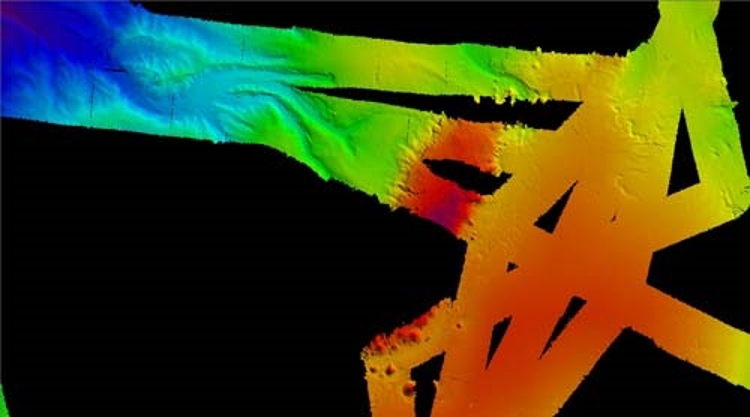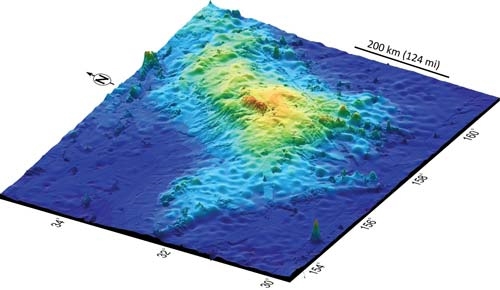The site, one of three provinces of the massive Shatsky Rise plateau, is located roughly 1000 km east of Japan in the northwest Pacific Ocean. As part of their investigation, scientists conducted research cruises in 2010 and 2012 aboard the R/V Marcus G. Langseth, a geophysical research vessel operated by the Lamont-Doherty Earth Observatory, of Columbia University. In addition to multichannel seismic survey capabilities, the Langseth is equipped with an EM122 1° x 1° multibeam echo sounder system. The large extent of this site is such that it would take a substantial effort to collect bathymetry and backscatter for the entire structure, across depths of 2000-5000 meters.

Multichannel seismic and core data was critical in defining the subsurface expressions that helped characterize the nature of the site. However, it is clear that the multibeam data presents morphological features worthy of further investigation.
In the meantime, regional bathymetry must be assembled by merging high resolution multibeam data with coarse satellite altimetry and sparse single beam data, as has been common practice for most of the deep ocean. We hope KONGSBERG systems will contribute to a more detailed understanding of this, and other large discoveries, in the future.
